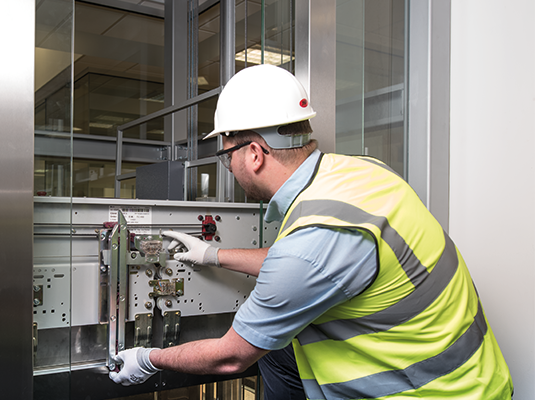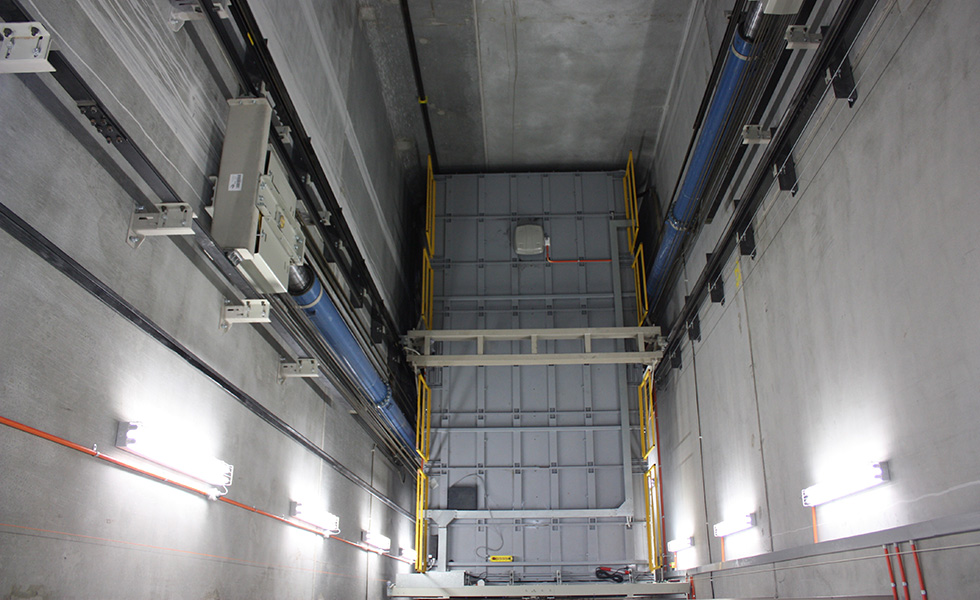Important Guide to Comprehending Handicapped System Lifts and Their Functionality
Understanding the ins and outs of disabled system lifts goes past plain awareness; it calls for a thorough understanding of their functionality and style. The rigid security regulations and upkeep factors to consider connected with platform lifts are paramount in ensuring their integrity and long life - lift modernization.
Kinds of Impaired System Lifts
There are numerous types of handicapped platform lifts developed to offer ease of access for people with flexibility difficulties. Upright system lifts are a preferred option as they move directly and down, making them perfect for shorter ranges and where space is restricted. These lifts are usually installed in homes, colleges, and industrial structures to help wheelchair customers in navigating various degrees. Inclined platform lifts, on the other hand, appropriate for places where a vertical lift may not be viable because of building restraints. These lifts adhere to the slope of stairways, supplying a smooth and safe experience for people with wheelchair issues.
Another type of impaired platform lift is the portable lift, which offers versatility and benefit. These lifts can be quickly relocated from one location to one more, making them ideal for short-lived events or situations where a long-term setup is not feasible. Additionally, outside platform lifts are designed to endure varying weather, enabling individuals to gain access to exterior rooms easily and freedom. Each sort of impaired system lift serves a distinct objective in boosting ease of access and boosting the top quality of life for individuals with mobility difficulties.
Secret Parts and Mechanisms
Handicapped system lifts, such as upright and likely lifts, rely upon particular vital components and mechanisms to guarantee smooth and risk-free transportation for people with flexibility difficulties. One crucial element of these lifts is the system itself, which acts as the foundation for moving individuals - disabled platform lift. The platform is developed to be strong, sizable enough to fit mobility devices or movement devices, and outfitted with safety and security features such as guardrails and non-slip surfaces to avoid crashes throughout transportation

In addition, safety and security sensors and emergency quit buttons are integrated right into disabled system raises to boost individual security and stop mishaps. These elements interact to create a dependable and efficient transport solution for individuals with flexibility problems.
Installation and Maintenance Considerations

Normal upkeep is similarly important to maintain impaired system raises running efficiently. By focusing on correct setup and diligent upkeep methods, the longevity and efficiency of disabled platform lifts can be made best use of, profiting both individuals and center managers.
Security Attributes and Regulations
Guaranteeing compliance with safety and security regulations is critical when evaluating the effectiveness of safety and security features in handicapped platform lifts. These lifts are subject to specific safety and security standards to secure users, making it crucial for manufacturers and drivers to comply with these regulations. Safety and security attributes frequently discovered in disabled system lifts include emergency quit switches, safety and security barriers, interlocks, and under-platform sensing units. Emergency quit buttons permit immediate stopping of the lift in instance of an emergency, while security barriers prevent users from unintentionally falling off the system. Interlocks make sure that the lift doors are firmly shut before the lift operates, boosting customer safety and security. Under-platform sensing units Resources discover blockages below the lift, preventing it from coming down if a things is in the method. In addition, routine maintenance and assessments are essential to guarantee that safety and security attributes are functioning properly and in compliance with regulations. By prioritizing safety functions and adhering to guidelines, handicapped platform lifts can give secure and reliable transportation for people with impairments.
Advantages of Using Platform Lifts
Conformity with safety guidelines and the application of crucial security functions in handicapped system lifts add to the total benefits of using these lifts for individuals with specials needs. Beyond safety, platform lifts supply a series of advantages that boost accessibility and comfort. One primary advantage is the boosted freedom they give to individuals with mobility obstacles. By providing a reputable means of vertical transportation, platform lifts empower people to gain access to different levels of a building without help, promoting a sense of freedom and flexibility. Additionally, system lifts are functional and can be set up in different setups, consisting of homes, colleges, and business buildings, making them a practical solution for a large array of settings. These lifts likewise promote inclusivity by making sure that people with specials needs can browse spaces together with their able-bodied peers. On the whole, the ease, freedom, and inclusivity helped with by system lifts substantially enhance the top quality of life for people with handicaps, making them an invaluable availability solution.

Conclusion
To conclude, handicapped platform lifts come in numerous types with essential elements and mechanisms that allow for risk-free and efficient operation. Setup and maintenance factors to consider are vital for making sure correct capability. Safety attributes and policies should be stuck to at all times to stop mishaps - elevator maintenance. The advantages of utilizing platform lifts include raised availability and self-reliance for individuals with handicaps.